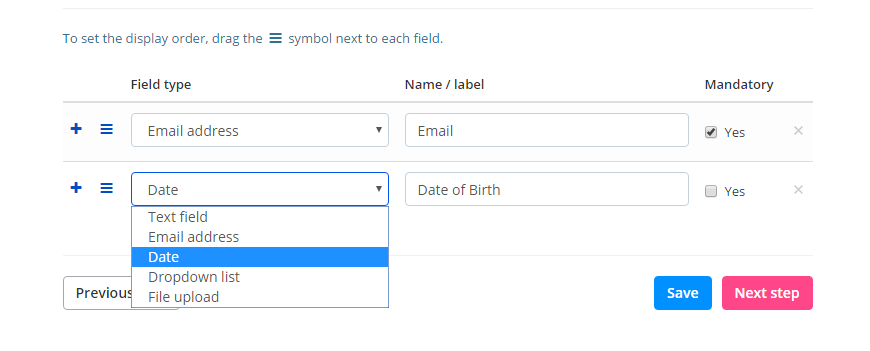5 Event Trends to watch in 2021 was initially published in our Newsletter on February 11th, 2021.
Hello,
quick question:
How will the future look like?
I’m sure we’ve all asked ourselves this question.
It’s one of the hardest answers somebody could give. Lately, we’ve seen how things can go south without any warning. However, in the long term, we can identify directions that are followed even if temporary circumstances force things to go off track.
During the last few weeks, we’ve tried to see the directions events will go in 2021. We’ve directly spoken with tens of event organizers and read many articles written by the industry’s top professionals. And although nobody can say for sure that there is a stable track that we should all follow, we’ve identified the most important trends that will probably mark 2021’s event industry.

Hybrid events
When discussing with event professionals, hybrid events were the most common answer as a 2021 trend. Regardless of how things will evolve, hybrid events are here to stay.
Why? Even if restrictions are fully lifted, and this will probably not be the case for 2021, we are not yet ready to go back to the way we used to act before the pandemic. Most of us will still choose to attend from the safety of our homes. And that’s fine. Events can now offer meaningful experiences for both in-person and virtual attendees.
How? Even if you are hosting an in-person event, make sure that you offer online participants a way of attending your event. Most likely, a big part of your community is still not able (or ready) to attend physically, and that’s ok! You can easily allow people to virtually attend your experience. With Streams.live you can easily set up online and hybrid events – it automatically imports data from Oveit and you can use the same username (email address) and password to access the account.
Micro-experiences
Even if you have the opportunity to host in-person experiences, they will probably take the form of micro-experiences.
Why? Due to travel bans, in-person attendance will probably be limited to locals. Small get-togethers will replace classic events, at least for this year. Having fewer physical attendees will allow you to not only make sure that sanitary measurements are properly implemented but also to focus on delivering tailored, attendee-centric, experiences. With few exceptions, just local supporters of your events will be able to attend in-person.
How? Make sure that you follow all sanitary recommendations, I cannot stress out enough this. Also, make sure that you collect all needed information from your attendees. This will help you deliver safe and tailored experiences.
Contactless experiences
In 2021, paper and money should not change hands. Transform your events into cash (and paper) free experiences and keep everybody safe.
Why? Money changing hands is definitely something that we should avoid by all means. It’s expensive and allows for fraud and human errors to occur. It’s also unsafe from a medical point of view. But going touchless offers many operational benefits as well.
How? Event registration and management solution allow you to go fully digital and eliminate the need for printed tickets, cash, or plastic tokens. It may sound complicated, but it’s even easier (not to mention safer) than how things used to be. Read this article and see how easy it is to transform your event into a touchless experience.
Live shopping as event trends to watch in 2021

This experience, which, at first sight, may seem that has nothing to do with event trends, is the result of mixing entertainment and shopping. It’s used to describe online shopping journeys that have engaging live video experiences as their starting point.
Why? The last few years gave us the possibility to see live how entertainment (live events) and purchases go hand in hand. Better said…people spend more while having fun. And we saw how more and more brands have included events and festivals not only in their marketing strategies but as selling channels as well. New revenue streams were initiated through this kind of live experiences. Moving your experience online doesn’t mean that these revenue streams will be lost.
How? By creating shoppable experiences within your virtual events, viewers can purchase products and services straight from the live experience. Without being forced to leave it. Streams.live allows you to easily make your content shoppable.
Sustainability
The general opinion is that sustainability is not just a 2021 trend. It’s here to stay. Unlike some of the other trends (mentioned or missed from this message), sustainability has, in the long term, a much greater impact on our lives and businesses. Luckily, event organizers not only see sustainability as important but are also taking action in this direction.
Why? Because environmental problems are a fact and it’s up to us into making a difference. We can not only make our events more environmentally friendly but we can also spread the word throughout the community.
How? You can start small: encourage your attendees not to print their tickets as they can easily be scanned straight from their smartphones. Next – find a solution for your left-over food. There are so many solutions to eliminate waste. Single-use plastics should be a thing of the past, we have so many eco-friendly alternatives these days. You can go further and find a partner that is willing to educate your attendees on sustainability and the benefits of circular economies.
These are just 5 event trends we think you should take a look at in 2021. Of course, while documenting, you will find comprehensive lists of what to expect from 2021. Some trends are here to stay, some are just temporary. Some are pandemic-inducted (or accelerated), some are not. But they are all equally important.




